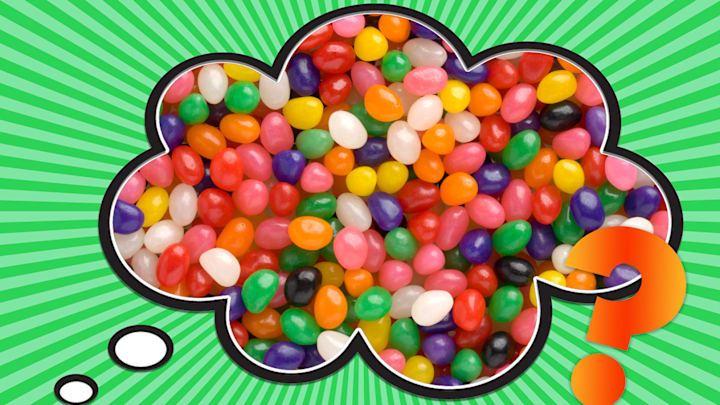Unlike Christmas and Thanksgiving, Easter doesn’t come with a traditional menu in the U.S. Besides the dyed, hard-boiled eggs that kids look for on Easter morning, the foods most closely associated with the Christian celebration are mass-produced candies. Chocolate bunnies, Peeps, and Cadbury Eggs are natural fits for the spring holiday, but the inclusion of jelly beans in Easter baskets requires more explanation.
Jelly beans have their roots in Turkish delight, a Middle Eastern gelatin confection that pre-dates the New Testamant. Gelatin, which is derived from the collagen of animal bones and tendons, was eventually used to make other sweet treats. JELL-O, gummy bears, and licorice depend on the ingredient for their signature texture (though vegetarian options do exist).
According to Better Homes & Gardens, the earliest mentions of jelly beans date back to the late 19th century. At this time, the candy was more closely associated with Christmas than Easter. Jelly beans were first floated as an Easter treat as a way to save money; because the affordable sweets were shaped like tiny eggs, people started using them to supplement the real chicken eggs in their Easter baskets. They also came in a variety of bright colors like dyed Easter eggs. Plus, the sugar rush was a welcome indulgence at the end of the Lenten season.
Jelly beans were quickly embraced as part of American Easter traditions. Meanwhile, they fell out of favor around Christmas—a holiday that already was already linked to a variety of candies. The popularity of jelly beans rose steadily throughout the 20th century before skyrocketing in the 1970s. The decade prior, the Goelitz Candy Company introduced the first jelly beans infused with flavor in both their candy coating and jelly center. They started experimenting with unusual flavors like cream soda and root beer in 1976; this was also the same year they rebranded their product as Jelly Belly.
Candy may be the most popular Easter item in the U.S., but that isn’t the case in many other countries where people observe the holiday. In the UK, hot cross buns are synonymous with the celebration. The pastries are studded with fruit and topped with a cross—either with icing or by marking the dough itself. Dating back to the 18th century or earlier, the treats have come to be associated with superstitions. Some people believe hanging a hot cross bun made on Good Friday from the kitchen ceiling protects against evil spirits and fires.
Bread for Easter is a common theme around the world. Ukraine and Poland celebrate the holiday with babka, a sweet loaf that’s sometimes blessed at church services before Easter feasts. In Cyprus, they eat flaounes (also know as pilavuna), which consists of dough filled with eggs, cheese, and mint. The traditional meals reserved for Lent look a lot different. In Nicaragua, they serve iguana soup, which is exactly what it sounds like. Many Catholics abstain from eating meat in the 40 days leading up to Easter, but the Catholic definition of “meat” isn’t an exact science. In addition to iguanas, beavers, muskrats, and capybaras are all fair game during Lent according to the church.
Read More Stories About Candy Here:
[h/t Better Homes and Gardens]
Have you got a Big Question you'd like us to answer? If so, let us know by emailing us at bigquestions@mentalfloss.com.
